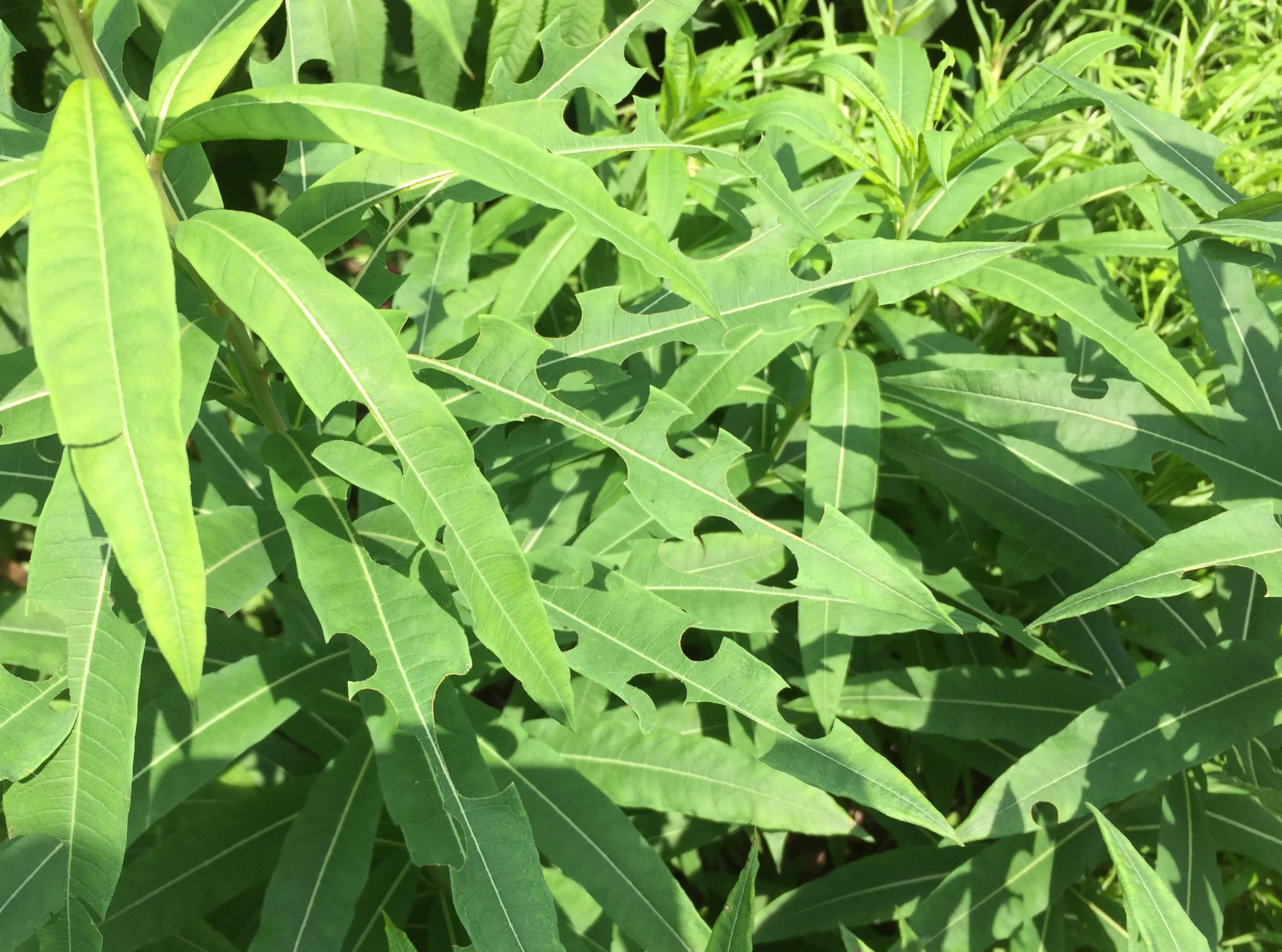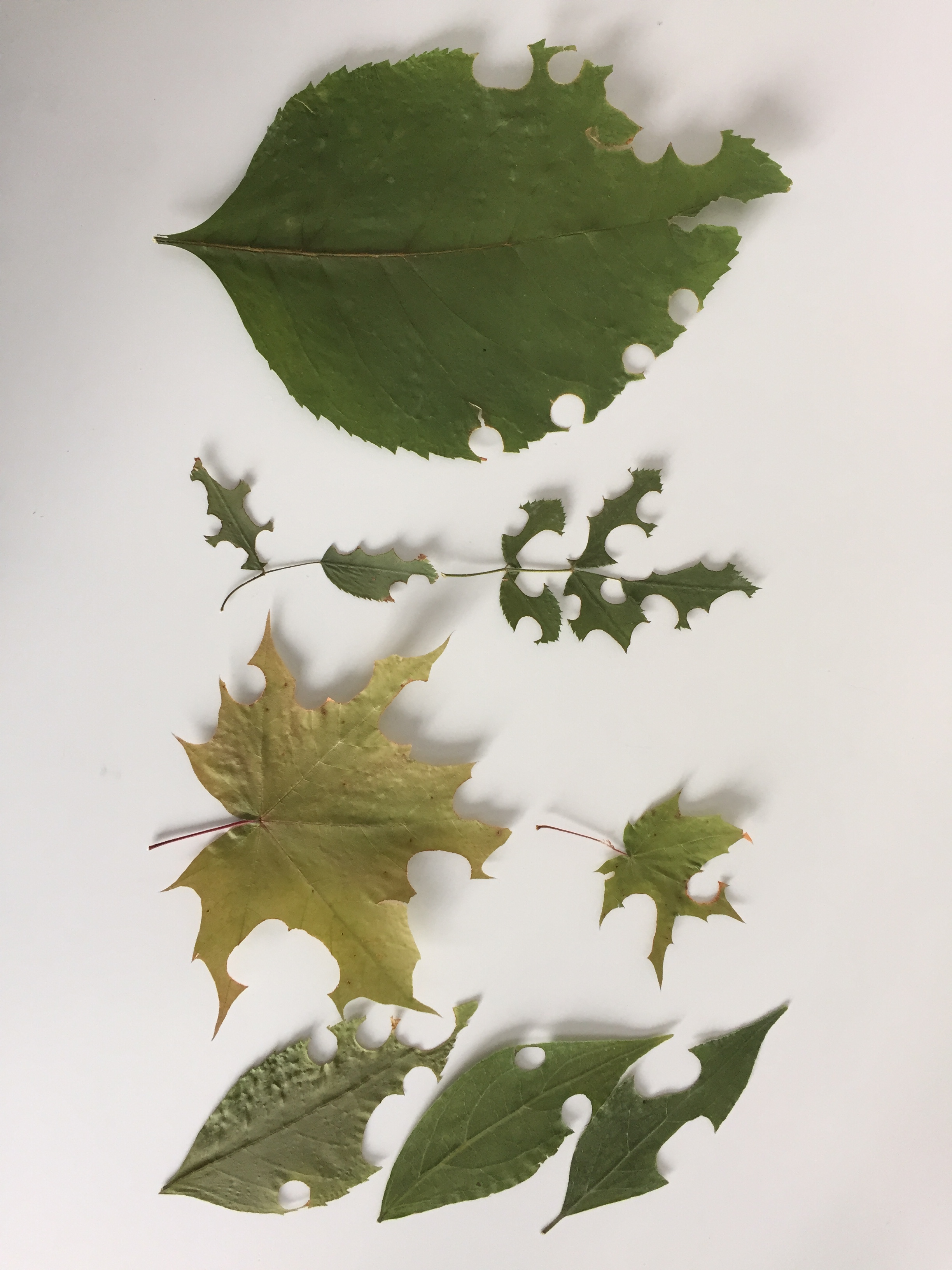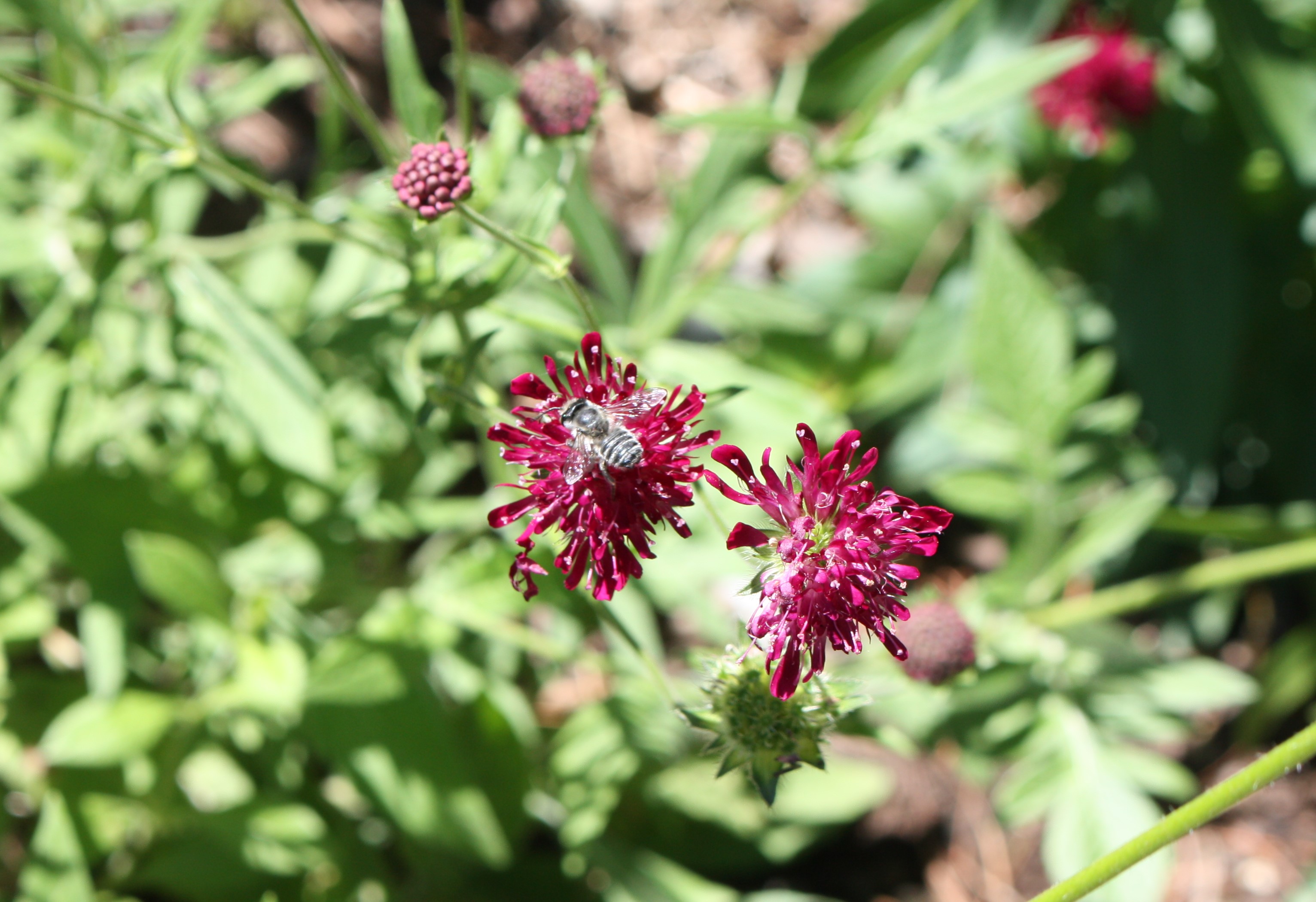A few weeks ago, I noticed the tell-tale sign that leafcutter bees are at work in the garden — tidy oval and circular holes in leaves.

These solitary bees create cavity nests by shaping oval pieces of leaves into tunnels. The finished nests look a lot like green cigars. Smaller circular pieces are used to divide the nest into cells (rooms) for each larvae, or to cap the end of the nest. This Wild Pollinator Partners blog post about Leafcutter bees includes a picture of nests found under a rock.
In our garden, they really like to use leaves from fireweed and rosa glauca. In Bees: An Identification and Native Plant Forage Guide (at Ottawa Public Library), Heather Holm lists other common plants that leafcutter bees use for nesting materials: tick trefoil, St. John’s wort, ash trees, and redbud trees. Over the past couple of years, I found that leafcutter bees used a wide variety of leaves around the yard.

Within each brood cell, a female leafcutter bee makes a ball of pollen, called bee bread. She then lays an egg on top of the bee bread, and closes up the brood cell. When the bee larvae hatches from its egg, it eats the bee bread as it grows. The larvae then forms a cocoon where it develops into a bee.
I’ve managed to catch a few leafcutter bees cutting pieces from the fireweed leaves (Youtube video). They are amazingly quick at cutting each leaf piece. Sometimes they stop cutting part way and abandon it, perhaps because the leaf is too tough. Once they finish cutting a leaf piece, they struggle to carry the extra weight. I often see them stopping to rest, with the leaf piece still in their mandibles, on their way back to the nest.
Despite comparing my photos of leafcutter bees with those in identification guides and web sites, I am not sure what kind of leafcutter bees are living in our yard. My bee identification skills have a long way to go.
Nest sites
Both this year and last, leafcutter bees have been making nests between rocks in the dry-stone walls of our terraced garden. Here’s a video of a leafcutter bee returning to its nest, and then leaving again. Since the bee isn’t carrying a leaf piece, it is provisioning the nest with a load of pollen, which you can see on her underside. There are at least three bees currently nesting in our rock walls. I’ve read that they like nesting near each other.

In 2017, we watched leafcutter bees making nests in the frames of our metal lawn chairs. Sometimes they had trouble getting into their nest entrances with the big leaf pieces, so we cheered them on, and were relieved when they finally succeeded. Now, our main seating area is located next to the stone walls where the leafcutters are nesting, so we again have a front-row seat to watch their activity. Such fun to watch!
Leafcutter bees will also use artificial bee boxes. If you do choose to place a bee box in your garden, make sure to line the tubes with paper that can be replaced every 1 or 2 years. This simple stem will help reduce the spread of parasites and fungal diseases between adjacent nest sites. For more information on bee box maintenance, see The horrors of mass-produced bee houses.
Foraging
Leafcutter bees are relatively easy to spot on flowers because they tip the end of their abdomen up in the air. They also carry pollen on hairs underneath their abdomen, instead of on their back legs.

I usually find them on flat, open flowers with a daisy-type shape. According to Holm, leafcutter bees are generalist foragers and will gather nectar and pollen from a wide variety of flowers.
A mysterious, lurking bee
As I watched the leafcutter bees coming and going from their nests, I spotted a smaller bee hanging out nearby. At first, I thought it might be a male looking to mate.
Then, I noticed that the bee had a very pointed abdomen. Uh-oh, I recognize that shape from pictures of parasitoid cuckoo bees. I didn’t have my phone, so I have no photo of the bee, but I believe it was a Modest Cuckoo Leafcutter Bee (see BugGuide). As usual, wherever there are bees, there are other insects that prey upon them, one way or the other.
I parked myself near a nest, with a cup of coffee, waited and watched. Sure enough, once the leafcutter bee flew away, the cuckoo bee entered the nest to lay its eggs. The pointed tip of the cuckoo bee’s abdomen is used to pierce the pollen ball to insert, and hide, its own eggs. When the cuckoo bee eggs hatch, they will eat the leafcutter larvae and the pollen that was left for them. For more on cuckoo bees, see the Restoring the Landscape page Native Bee Spotlight: Cuckoo Bees – Coelioxys spp. I’m wish this didn’t happen to ‘my’ leafcutter bees, but I know it is just how nature works.
We recently noticed a Leafcutter bee making a nest in one of our wind chimes! Not really knowing this bee was building a nest, my mom messed around with it a little and came back to find this beautiful architecture lying on the porch! I can’t find what to do if this happens. Should we leave it alone and the broods will still hatch or should we try to put the nest back into its original spot? Thanks so much!
LikeLike
That’s cool! The bees will spend this summer and next spring developing, before they chew their way out next year. You may not be able to get them back into the wind chime without damaging them. I’d tuck them under a rock at the edge of your yard where they won’t be disturbed. I’ve seen them making nests under rocks a few times. Just dig out a tiny trench, put the leafy nest tube in the trench, and then cover it with a rock.
LikeLike